Instruction
Dr. Bob Rotella: My 10 Rules On Mental Fitness

By Dr. Bob Rotella
With Alan Pittman
Photo by Walter Iooss Jr.
June 2009
Written by Golf Digest
01 Believe you can win.
I still remember my first major, the 1985 city championship in Charlottesville, Va. Back then I didn’t play a lot of golf, but I wanted to see how good the players in my town were. I shot in the 80s and finished third from last. When I got done, I decided to follow the leaders so I could see how my game compared. After watching them for 18 holes, my evaluation was this: They hit it farther than I did. They hit it straighter. Their bunker play was fantastic. And they chipped and putted better. But I left there believing that if those guys could win, so could I. I worked on my game, and over time I got better, including one winter when all I did each day after work was hit bunker shots. Eight years after I first competed, I made a 12-foot putt on 18 to win my city championship.
02 Don’t be seduced by results.
How can Trevor Immelman get to the 18th green of the final round of the 2008 Masters and not know where he stands? It’s called staying in the present, and it’s a philosophy I teach all the players I work with. It means not allowing yourself to be seduced by a score or by winning until you run out of holes. Instead, you get lost in the process of executing each shot and accept the result.
Before Trevor teed off on Sunday with a two-shot lead, he decided he wouldn’t look at leader boards. He had a plan: Pick a target, visualize the shot and let it rip. As Trevor walked up the 18th fairway, Brandt Snedeker put his arm around him and nudged him to walk ahead. Trevor told me it was the first time all day he allowed himself to think about the outcome. After marking his ball, he asked his caddie how they were doing. His caddie said he had a three-stroke lead over Tiger. Trevor said he went from being quiet and calm inside to thinking, How can I not five-putt this?
03 Sulking won’t get you anything.
The worst thing you can do for your prospects of winning is to get down when things don’t go well. If you start feeling sorry for yourself or thinking the golf gods are conspiring against you, you’re not focused on the next shot. When Padraig Harrington won the British Open in 2007, he got up and down for a double-bogey 6 on the last hole to make a playoff after knocking two balls into the water. Padraig told me he had a level of acceptance that earlier in his career he didn’t have. He said it never entered his mind that he might blow the tournament. His only thought was getting his ball in the hole so he could win the playoff.
04 Beat them with patience.
Every time you have the urge to make an aggressive play, go with the more conservative one. You’ll always be OK. In a tournament, the rough is thicker, the pins are tougher, and the greens are faster. The moment you get impatient, bad things happen.
The best example of patience I ever witnessed was Tom Kite at the 1992 U.S. Open at Pebble Beach. Kite had been 0 for 20 in U.S. Opens until then. On Sunday, wind gusts reached 35 miles per hour, but Kite didn’t get flustered. On a day when a lot of players didn’t break 80, Kite shot even par and won by two. In tough conditions, stay patient and let others beat themselves.
05 Ignore unsolicited swing advice.
Not too long ago, I was working with this player who was struggling. But a couple of strong finishes had him feeling better. At the next tournament he makes, like, eight birdies in the first round. Now he’s feeling really good. He stops by the putting green to hit a few, and a player he knows walks up to him and says: “I don’t know what you’re doing with your putting, but that’s not the way you used to set up.” A few minutes later another player comes over: “You don’t have your eyes over the ball the way you used to.” Now my guy doesn’t know what to think. He went from making everything he looked at to being a mess the next day.
You’ll have lots of well-meaning friends who want to give you advice. Don’t accept it. In fact, stop them before they can say a word. Their comments will creep into your mind when you’re on the course. If you’ve worked on your game, commit to the plan and stay confident.
06 Embrace your golf personality.
Some players like Anthony Kim love to socialize on the course. Others like Retief Goosen keep to themselves. The key is to find what works best for you. The toughest player, mentally and emotionally, I’ve ever worked with is Pat Bradley, the LPGA Tour Hall of Famer. She was like Ben Hogan — she didn’t talk to anybody when she played. She told me she didn’t have time to chat with players because she had an ongoing dialogue with herself. I still remember the day she called to tell me she was done. She’d been on the range before a tournament giving tips to other players. Later, on the first few holes, she found herself chitchatting with her playing partners. “I can’t play golf this way,” she told me. “I’m done. I’ve accomplished everything I wanted to accomplish.”
07 Have a routine to lean on.
I tell players to follow a mental and physical routine on every shot. It keeps you focused on what you have to do, and when the pressure is on, it helps you manage your nerves. A pre-shot routine helped Curtis Strange win his first U.S. Open, in 1988. Afterward he went home and watched the tape with his wife and kids. He told me they kept commenting on how cool and calm he looked. Curtis said to me: “I’m thinking, Who in the world are they talking about? They can’t be talking about me. I couldn’t get any moisture in my mouth. My heart was jumping out of my chest.” Curtis said he had so much emotion in his body it was unbelievable. He was working his tail off just to stay in the present, hit one shot at a time and not think about what it would mean to win the U.S. Open.
‘It’s easy to build up a tournament into something so huge that you can’t play.’
08 Find peace on the course.
When you practice hard and admit to yourself that you really want to win, it’s easy to build up a tournament into something so huge that you can’t play. I’ve seen amateurs not used to competing arrive two hours before their tee time and try to rebuild their golf swings. They become panicked practicers and try to perfect every area of their game. They get themselves so tied up in knots it’s ridiculous. Tour players do this, too. I’ve seen guys come to Augusta, rent a big house and invite their family and friends. When Thursday comes around, they start worrying: What if I miss the cut and disappoint everyone? The golf course has to be your sanctuary, the thing you love, and you can’t be afraid of messing up.
09 Test yourself in stroke play.
I’m a big believer that stroke play is real golf. I know lots of people who are good in matches who can’t play a lick at stroke play. But most guys who are good at stroke play also thrive in matches. When you have to count every shot, it’s a tougher game. Too often guys go out as a foursome and play “our best ball against your best ball.” That has its place, but stroke play makes you mentally tough.
10 Find someone who believes in you.
The greatest thing I’ve got going for me is my ability to believe in other people’s talents. I can see people doing things they can’t see themselves doing. Every champion needs that. Hogan once told me he considered quitting the game several times early in his career because he didn’t think he was providing for his wife the way he should. But Valerie wouldn’t let him quit. She knew he’d never be satisfied until he won majors. Having confidence in yourself is important, but it helps to have someone who believes in you, too, whether it’s a spouse, a friend, a teacher, or even a sport psychologist.
Read More http://www.golfdigest.com/magazine/2009-06/bobrotella_10rules#ixzz1fd8G7gpO
Read More http://www.golfdigest.com/magazine/2009-06/bobrotella_10rules#ixzz1fd83pFcL
- LIKE12
- LEGIT1
- WOW0
- LOL0
- IDHT0
- FLOP0
- OB1
- SHANK0

Instruction
The Wedge Guy: The easiest-to-learn golf basic

My golf learning began with this simple fact – if you don’t have a fundamentally sound hold on the golf club, it is practically impossible for your body to execute a fundamentally sound golf swing. I’m still a big believer that the golf swing is much easier to execute if you begin with the proper hold on the club.
As you might imagine, I come into contact with hundreds of golfers of all skill levels. And it is very rare to see a good player with a bad hold on the golf club. There are some exceptions, for sure, but they are very few and very far between, and they typically have beat so many balls with their poor grip that they’ve found a way to work around it.
The reality of biophysics is that the body moves only in certain ways – and the particulars of the way you hold the golf club can totally prevent a sound swing motion that allows the club to release properly through the impact zone. The wonderful thing is that anyone can learn how to put a fundamentally sound hold on the golf club, and you can practice it anywhere your hands are not otherwise engaged, like watching TV or just sitting and relaxing.
Whether you prefer an overlap, interlock or full-finger (not baseball!) grip on the club, the same fundamentals apply. Here are the major grip faults I see most often, in the order of the frequency:
Mis-aligned hands
By this I mean that the palms of the two hands are not parallel to each other. Too many golfers have a weak left hand and strong right, or vice versa. The easiest way to learn how to hold the club with your palms aligned properly is to grip a plain wooden ruler or yardstick. It forces the hands to align properly and shows you how that feels. If you grip and re-grip a yardstick several times, then grip a club, you’ll see that the learning curve is almost immediate.
The position of the grip in the upper/left hand
I also observe many golfers who have the butt of the grip too far into the heel pad of the upper hand (the left hand for right-handed players). It’s amazing how much easier it is to release the club through the ball if even 1/4-1/2″ of the butt is beyond the left heel pad. Try this yourself to see what I mean. Swing the club freely with just your left hand and notice the difference in its release from when you hold it at the end of the grip, versus gripping down even a half inch.
To help you really understand how this works, go to the range and hit shots with your five-iron gripped down a full inch to make the club the same length as your seven-iron. You will probably see an amazing shot shape difference, and likely not see as much distance loss as you would expect.
Too much lower (right) hand on the club
It seems like almost all golfers of 8-10 handicap or higher have the club too far into the palm of the lower hand, because that feels “good” if you are trying to control the path of the clubhead to the ball. But the golf swing is not an effort to hit at the ball – it is a swing of the club. The proper hold on the club has the grip underneath the pad at the base of the fingers. This will likely feel “weak” to you — like you cannot control the club like that. EXACTLY. You should not be trying to control the club with your lower/master hand.
Gripping too tightly
Nearly all golfers hold the club too tightly, which tenses up the forearms and prevents a proper release of the club through impact. In order for the club to move back and through properly, you must feel that the club is controlled by the last three fingers of the upper hand, and the middle two fingers of the lower hand. If you engage your thumbs and forefingers in “holding” the club, the result will almost always be a grip that is too tight. Try this for yourself. Hold the club in your upper hand only, and squeeze firmly with just the last three fingers, with the forefinger and thumb off the club entirely. You have good control, but your forearms are not tense. Then begin to squeeze down with your thumb and forefinger and observe the tensing of the entire forearm. This is the way we are made, so the key to preventing tenseness in the arms is to hold the club very lightly with the “pinchers” — the thumbs and forefingers.
So, those are what I believe are the four fundamentals of a good grip. Anyone can learn them in their home or office very quickly. There is no easier way to improve your ball striking consistency and add distance than giving more attention to the way you hold the golf club.
More from the Wedge Guy
- The Wedge Guy: Golf mastery begins with your wedge game
- The Wedge Guy: Why golf is 20 times harder than brain surgery
- The Wedge Guy: Musings on the golf ball rollback
- LIKE83
- LEGIT13
- WOW4
- LOL1
- IDHT0
- FLOP4
- OB1
- SHANK8
Instruction
Clement: Stop ripping off your swing with this drill!

Not the dreaded headcover under the armpit drill! As if your body is defective and can’t function by itself! Have you seen how incredible the human machine is with all the incredible feats of agility all kinds of athletes are accomplishing? You think your body is so defective (the good Lord is laughing his head off at you) that it needs a headcover tucked under the armpit so you can swing like T-Rex?
- LIKE0
- LEGIT1
- WOW2
- LOL0
- IDHT0
- FLOP0
- OB0
- SHANK2
Instruction
How a towel can fix your golf swing
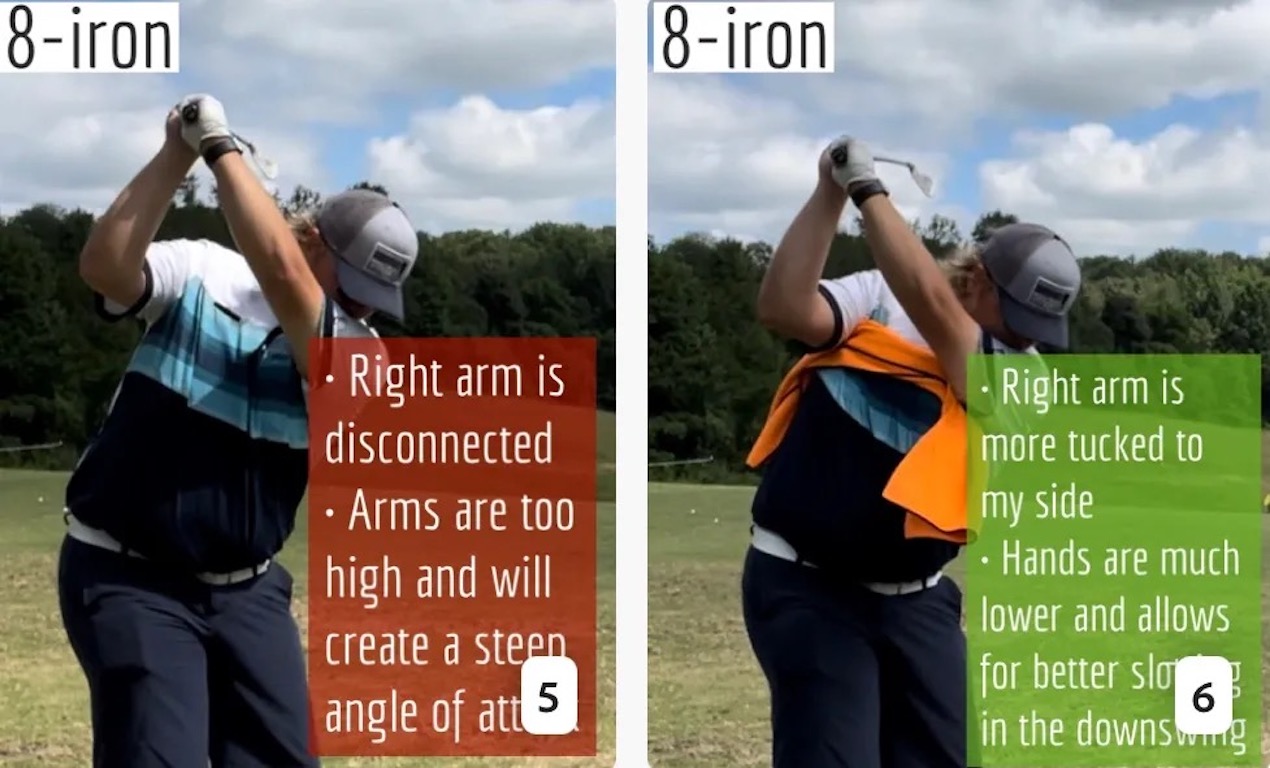
This is a classic drill that has been used for decades. However, the world of marketed training aids has grown so much during that time that this simple practice has been virtually forgotten. Because why teach people how to play golf using everyday items when you can create and sell a product that reinforces the same thing? Nevertheless, I am here to give you helpful advice without running to the nearest Edwin Watts or adding something to your Amazon cart.
For the “scoring clubs,” having a solid connection between the arms and body during the swing, especially through impact, is paramount to creating long-lasting consistency. And keeping that connection throughout the swing helps rotate the shoulders more to generate more power to help you hit it farther. So, how does this drill work, and what will your game benefit from it? Well, let’s get into it.
Setup
You can use this for basic chip shots up to complete swings. I use this with every club in my bag, up to a 9 or 8-iron. It’s natural to create incrementally more separation between the arms and body as you progress up the set. So doing this with a high iron or a wood is not recommended.
While you set up to hit a ball, simply tuck the towel underneath both armpits. The length of the towel will determine how tight it will be across your chest but don’t make it so loose that it gets in the way of your vision. After both sides are tucked, make some focused swings, keeping both arms firmly connected to the body during the backswing and follow through. (Note: It’s normal to lose connection on your lead arm during your finishing pose.) When you’re ready, put a ball in the way of those swings and get to work.
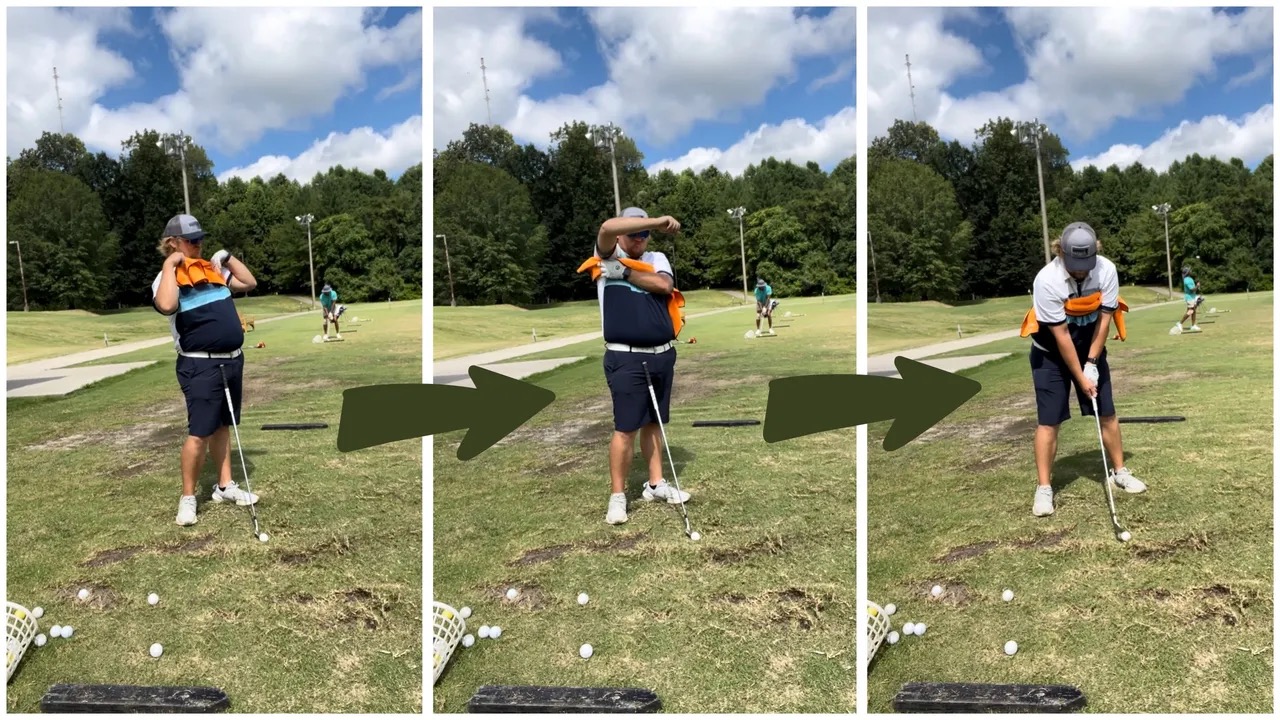
Get a Better Shoulder Turn
Many of us struggle to have proper shoulder rotation in our golf swing, especially during long layoffs. Making a swing that is all arms and no shoulders is a surefire way to have less control with wedges and less distance with full swings. Notice how I can get in a similar-looking position in both 60° wedge photos. However, one is weak and uncontrollable, while the other is strong and connected. One allows me to use my larger muscles to create my swing, and one doesn’t. The follow-through is another critical point where having a good connection, as well as solid shoulder rotation, is a must. This drill is great for those who tend to have a “chicken wing” form in their lead arm, which happens when it becomes separated from the body through impact.
In full swings, getting your shoulders to rotate in your golf swing is a great way to reinforce proper weight distribution. If your swing is all arms, it’s much harder to get your weight to naturally shift to the inside part of your trail foot in the backswing. Sure, you could make the mistake of “sliding” to get weight on your back foot, but that doesn’t fix the issue. You must turn into your trial leg to generate power. Additionally, look at the difference in separation between my hands and my head in the 8-iron examples. The green picture has more separation and has my hands lower. This will help me lessen my angle of attack and make it easier to hit the inside part of the golf ball, rather than the over-the-top move that the other picture produces.
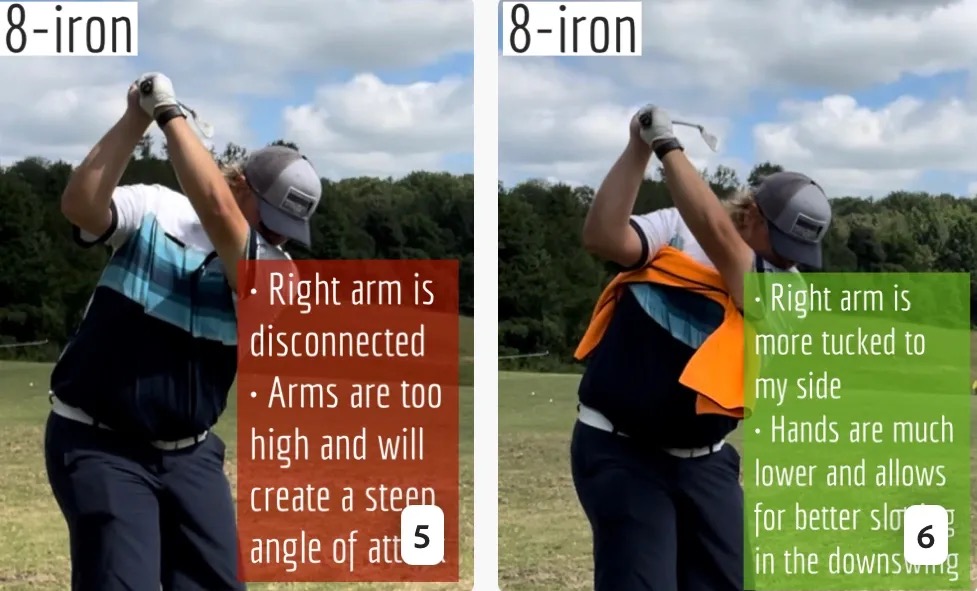
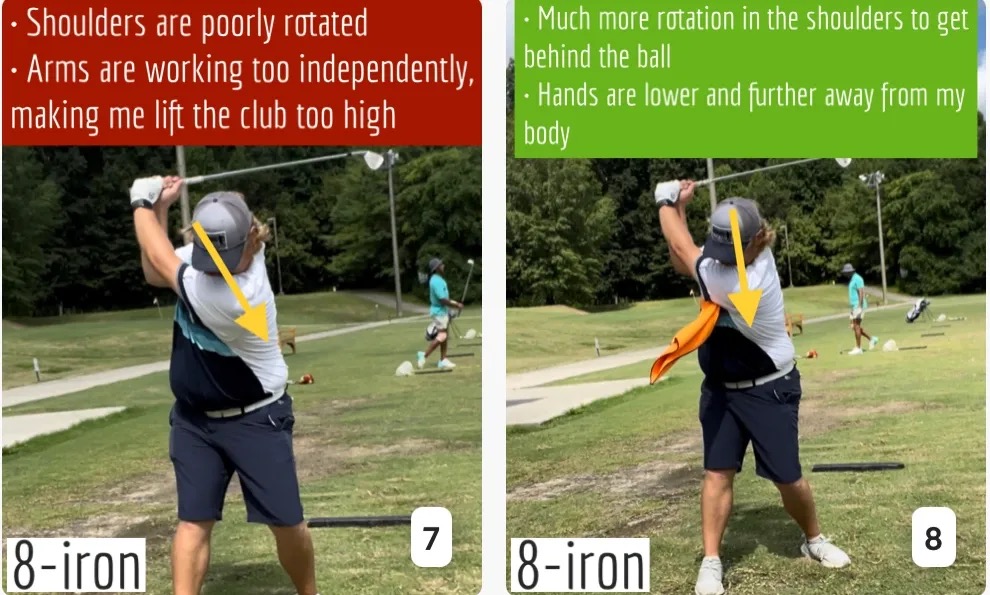
Stay Better Connected in the Backswing
When you don’t keep everything in your upper body working as one, getting to a good spot at the top of your swing is very hard to do. It would take impeccable timing along with great hand-eye coordination to hit quality shots with any sort of regularity if the arms are working separately from the body.
Notice in the red pictures of both my 60-degree wedge and 8-iron how high my hands are and the fact you can clearly see my shoulder through the gap in my arms. That has happened because the right arm, just above my elbow, has become totally disconnected from my body. That separation causes me to lift my hands as well as lose some of the extension in my left arm. This has been corrected in the green pictures by using this drill to reinforce that connection. It will also make you focus on keeping the lead arm close to your body as well. Because the moment either one loses that relationship, the towel falls.
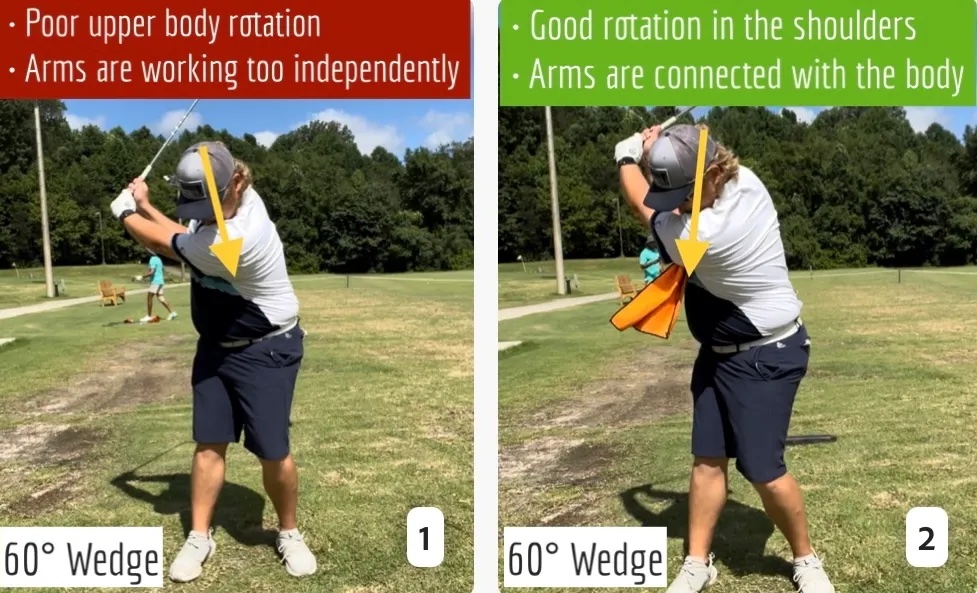
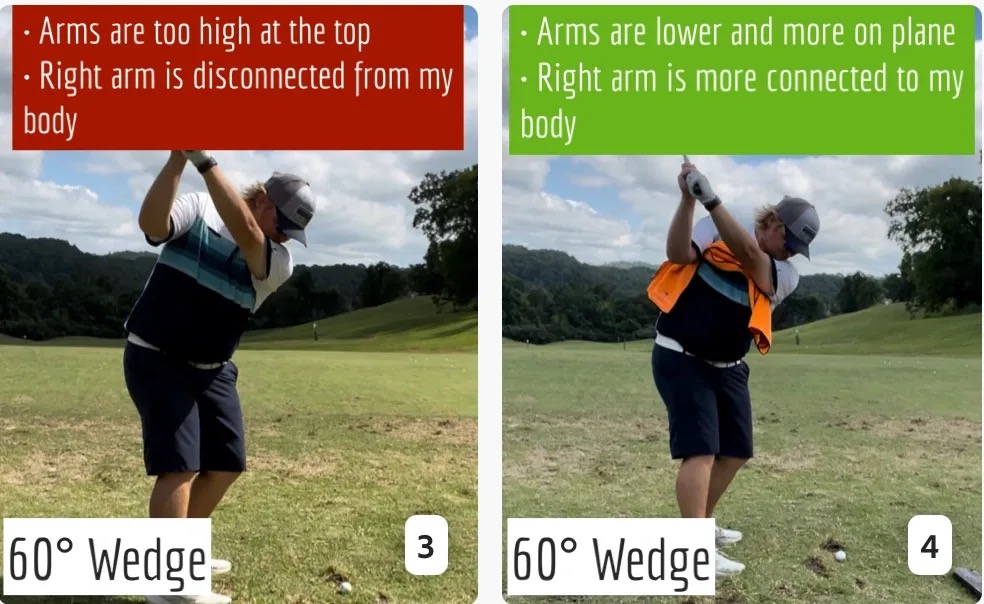
Conclusion
I have been diligent this year in finding a few drills that target some of the issues that plague my golf game; either by simply forgetting fundamental things or by coming to terms with the faults that have bitten me my whole career. I have found that having a few drills to fall back on to reinforce certain feelings helps me find my game a little easier, and the “towel drill” is most definitely one of them.
- LIKE12
- LEGIT1
- WOW2
- LOL0
- IDHT0
- FLOP2
- OB0
- SHANK8
-
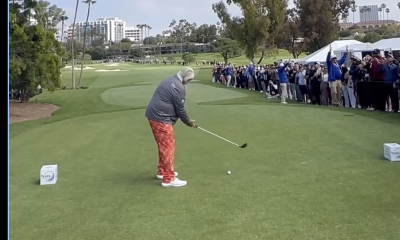
 19th Hole2 weeks ago
19th Hole2 weeks agoJohn Daly stuns fans into silence with brutal opening tee shot on PGA Tour Champions
-
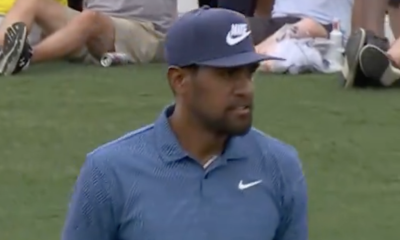
 19th Hole4 days ago
19th Hole4 days agoThings got heated at the Houston Open between Tony Finau and Alejandro Tosti. Here’s why
-

 19th Hole22 hours ago
19th Hole22 hours agoReport: Tiger Woods has ‘eliminated sex’ in preparation for the 2024 Masters
-

 19th Hole2 weeks ago
19th Hole2 weeks ago2-time major champ announces shock retirement from the sport at age of 33
-

 19th Hole2 weeks ago
19th Hole2 weeks agoCharlie Woods finds it tough going on American Junior Golf Association debut
-

 19th Hole2 weeks ago
19th Hole2 weeks agoEdoardo Molinari reveals the latest PGA Tour golfer to turn down ‘good offer’ from LIV Golf
-
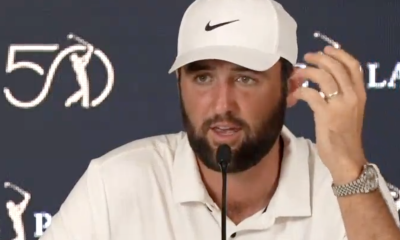
 19th Hole3 weeks ago
19th Hole3 weeks agoScottie Scheffler had an interesting response when asked how he ‘quiets the noise’ following Players victory
-

 19th Hole2 weeks ago
19th Hole2 weeks agoJon Rahm dealt fresh blow to hopes of qualifying for 2025 Ryder Cup











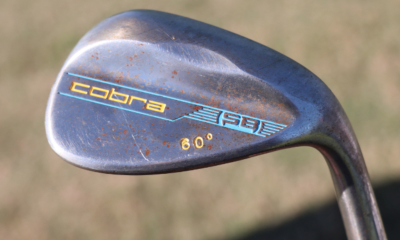





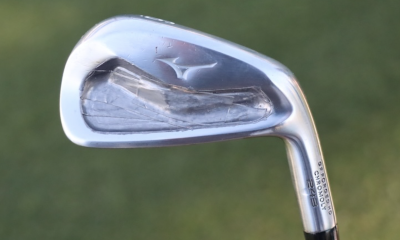

CJ
Dec 29, 2011 at 9:56 am
I can’t agree more with #06.
I play my best golf when I am alone on the course or when I am playing with someone but there is little to no conversation. If I play with people that are making a lot of small talk I need to separate myself from it because I’ve found it makes at least a 5 stroke difference in my scores. I guess I am an anti-social golfer.
Dane Byers
Dec 20, 2011 at 6:37 pm
this article gave me goosebumps. i can see that the few chances i have to play in tournaments i build it up, and that while most of the time i have confidence i let to much doubt creep in to my mind. its amazing how we let the simple things go away and let in to much of the clutter.